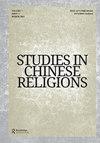Biography and its social world: the ‘Stele of Lord Lu’
IF 0.3
3区 哲学
0 ASIAN STUDIES
引用次数: 0
Abstract
ABSTRACT Sinologists have traditionally read Chinese biographies as repositories of facts about their subjects, but their pedagogical function means biographies can tell us not just about their subjects, but also their intended audience(s) and the author’s ideological program. This article takes as its starting point a biography of the famous Daoist master Lu Xiujing 陸修靜 (406–77) written by the Tang poet Wu Yun 吳筠 (d. 778) and engraved on a stele that was erected in Lu’s honor in 761. Building on the work of Jan M. De Meyer, I show what Wu’s biography can tell us about its author and audience. Wu crafted a vitae-cum-morality tale with a twofold audience: Daoist priests and imperial officials. For the priests, he fashioned a model life that offered a superior alternative to the conventional literati career. Imperial officials learned that Daoist priests possessed the keys to imperial longevity and good governance.传记及其社会世界:《吕公碑》
传统上,汉学家将中国的传记视为其主题的事实宝库,但它们的教学功能意味着传记不仅可以告诉我们它们的主题,还可以告诉我们它们的目标受众和作者的思想纲领。本文以唐代诗人吴云(公元778年)所写的著名道教大师卢秀景的传记为起点,并将其刻在761年为纪念卢秀景而竖立的一块石碑上。在扬·m·德·迈耶(Jan M. De Meyer)作品的基础上,我展示了吴的传记可以告诉我们的关于作者和读者的信息。吴精心制作了一个充满道德的故事,观众有两种:道士和朝廷官员。对于牧师,他塑造了一种模范生活,为传统的文人生涯提供了一种优越的选择。朝廷官员了解到,道家祭司拥有帝国长寿和良好治理的关键。
本文章由计算机程序翻译,如有差异,请以英文原文为准。
求助全文
约1分钟内获得全文
求助全文
来源期刊

Studies in Chinese Religions
Arts and Humanities-Religious Studies
CiteScore
0.20
自引率
0.00%
发文量
10
 求助内容:
求助内容: 应助结果提醒方式:
应助结果提醒方式:


